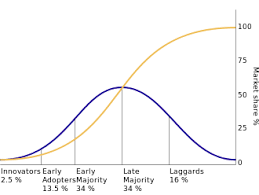What are the differences between System 1 and System 2, and what this means for market research? While it’s a helpful analogy for the different ways in which we all make decisions, there are some key differences that are important for research, but things aren’t always as binary as the analogy makes them appear.
System 1 is much faster than System 2, is habitual rather than planning, works in patterns rather than rules and works without intentional control. System 1 is instinctive rather than reflective, learns by association compared with the more linear System 2, and is all about feeling and reacting rather than thinking. System 1 is primarily implicit and unknown, while System 2 is mostly explicit and open to conscious introspection.
System 1 is vastly more powerful and knows a lot more about our behaviour than System 2, processing more than 11 million pieces of information every second. For humans, while System 2 has some influence over System 1, System 1 often over-rides System 2 as you can see in the illusion of the hollow mask. When you watch this video, you will experience a real-time example of System 1 over-riding System 2. Your intuitions are simply far more powerful than your reason and reflection. As Daniel Kahneman wrote, “Many ideas happen to us. We have intuition, we have feeling, we have emotion, all of that happens, we don’t decide to do it. We don’t control it.”
The huge information flow in System 1 is primarily from the senses, and the 11 million doesn’t even include the internal sensory systems inside our bodies. The language of System 1 is experience of our interactions with the world around us (what Steven Pinker calls ‘mentalese’). However, visual information is the most important component (around 90% if the sensory information is visual) and is often the most useful proxy for researchers.
Although humans often like to think in terms of binaries, it may be more useful for researchers to think of thinking and decision-making in terms of a continuum from the extremely explicit (System 2 at the top of this matrix) to the extremely implicit (System 1 at the bottom of the matrix), with different research approaches more suitable for different levels of knowledge in-between.
| METHOD | LAYER | OUTPUT |
| Simple questioning | Spontaneous, public | Immediate spontaneous response |
| Asking & reminding | Reasoned, conventional | Justifications, explanations |
| Pressing | Preconscious | Detailed elaborations & introspections |
| Sympathetic probing | Concealed, personal | Personal admission |
| Play, drama, non-verbal | Intuitive, non-communicable | Symbols, analogy, imagination, heuristics |
| Projective approaches, metaphor elicitation, implicit association | Non-conscious, non-aware | Hidden attitudes & motives, mental algorithms, pattern recognition |
You will notice that I haven’t included neuromarketing techniques such as fMRI, EEG, facial coding, and biometrics at the bottom of this table. In a recent paper at the Neuromarketing World Forum, Paul Conner compared different approaches across different types of emotion (affect, primary, secondary) and different theories of emotion (basic emotion theory, theory of constructed emotion). He concluded that implicit association, metaphor elicitation and other projective techniques are the only ones that work well across all levels of emotion, whatever theory you believe. The latest theories of emotion liken them to mental constructions (perceptual) rather than hard-wired systems (read more here).
Let’s move to a real example of the differences from research conducted by TapestryWorks around one year ago across four countries looking at the emotional goals of beauty. The research covered the UK, Thailand, Indonesia and Australia.
We tested 36 emotional concepts, based around 12 human values, using verbal and visual stimuli with more than 1,200 women. We asked the question, “What is the beauty that you desire for yourself?” and asked women to choose 3 most relevant concepts from the 36 presented.
Looking first at responses to the verbal stimuli, women overwhelmingly chose the concept of “Confident”, from 49% in Thailand to 63% in Indonesia and more than 50% in Australia and UK. The focus on the idea of Confidence is at the expense of other values and goals, apart from Charismatic and Strong (3 from 4 countries).
When the data is aggregated across the 12 overall values, or even into a simplified six segments, the skew in the results is clear. Is it really true that Confidence is the only important goal of beauty? The results could be because of translation issues, but the terms were carefully translated and back-translated and the consistent importance of Confidence suggests that translation may not be the main issue. Another more likely explanation is that “Confident” is the obvious explicit answer to System 2, being the category norm and a universally accepted message in brand advertising for beauty.
Perhaps “Confident” is not a precise concept and has a wide range of meanings? Jacques Derrida wrote that, “As soon as there is language, generality has entered the scene.” Are pictures more precise in describing emotional concepts?
We tested the same 36 concepts as images, chosen from a set of generic Western images and avoiding specific cultural references. The results are far more nuanced, with two key segments (in the simplified model) and five images that are the most popular consistently across all four countries, albeit in different orders of priority.
Although “Charismatic” (a glamorous version of Confident) is still an important emotion relating to beauty, it does not dominate the results based on visual stimuli. It is the most important concept for women in Indonesia and the UK, but only second in Australia and Thailand.
Strong is again important, first for Australian women and second in UK. Hopeful is also important, first for Thai women and second in Indonesia. However, Strong is fifth in Indonesia and Thailand, while Hopeful is fifth in Australia and UK, pointing to the most important cultural difference in how Asian and Western women see beauty.
Moreover, if the results are cross-tabulated with results based on verbal stimuli, the key images and the order are exactly the same for those women who chose the verbal concept of “Confident”. Results suggest that “Confident” is not a precise emotional term, but an all-encompassing concept in the beauty category. Wendy Gordon wrote that, “Words are slippery. We assume that everyone understands the same thing. They don’t.”
Visual stimuli, if well chosen, give more consistent and more nuanced insights into human motivations than verbal stimuli. And they are simpler, quicker and more intuitive for people to use (around one-third of the time in a survey). They are helping us access System 1, rather than going through System 2.
To use a last quote from Wendy Gordon, “Recall is like a search engine … [it] is only as effective as the cue given. The capacity for [brand] recognition is infinitely greater than that for recall.” Implicit knowledge is best captured by recognition rather than recall. Recognition requires just a single process and decision about familiarity, whereas recall is a two-stage memory process, where a memory has to be actively constructed.
Typically, researchers start with the most explicit and try to work their way to more implicit knowledge. However, they typically hit a wall when they move into knowledge that cannot be articulated or is outside awareness.
Researchers should start with System 1 and work up to System 2, rather than the other way around. My experience is that once you have accessed the intuitive responses of people through recognition, it’s much easier to get them to articulate and describe their motivations, emotions and behaviours. If you start with System 2, you will struggle because you are relying on recall rather than recognition.
In summary, researchers should recognize that “talking” to implicit System 1 can help them talk more effectively with explicit System 2. Think about visual (mentalese) tools to help your verbal approaches, use recognition to prompt memory recall and, most of all, use implicit feelings to help explicit thinking.
[This is a written version of a presentation for Asia Research breakfast seminar in Singapore on 27 September 2018. You can access the slides here.]
REFERENCES
The Mental World of Brands: Mind, memory and brand success by Franzen & Bouwman
Mindframes: 6 enduring principles from 50 years of market research by Wendy Gordon
Points… : Interviews, 1976-1994 by Jacques Derrida
Thinking, Fast and Slow by Daniel Kahneman
The User Illusion by Tor Norretranders
Seeing Through Illusions by Richard Gregory
Brand Meaning: Meaning, myth and mystique in today’s brands (2ndedition) by Mark Batey
Brand esSense by Neil Gains
“How you define emotion directs how you measure it” by Paul Conner (http://emotiveanalytics.com/define-measure=consumer-emotions/)







66 Ways to Not Screw up Marketing – TapestryWorks
[…] late in the decision-making process at point-of-purchase. System 1 is hard to research (read more here) which is why research exaggerates the importance of System 2 and we attribute actions to System 2 […]